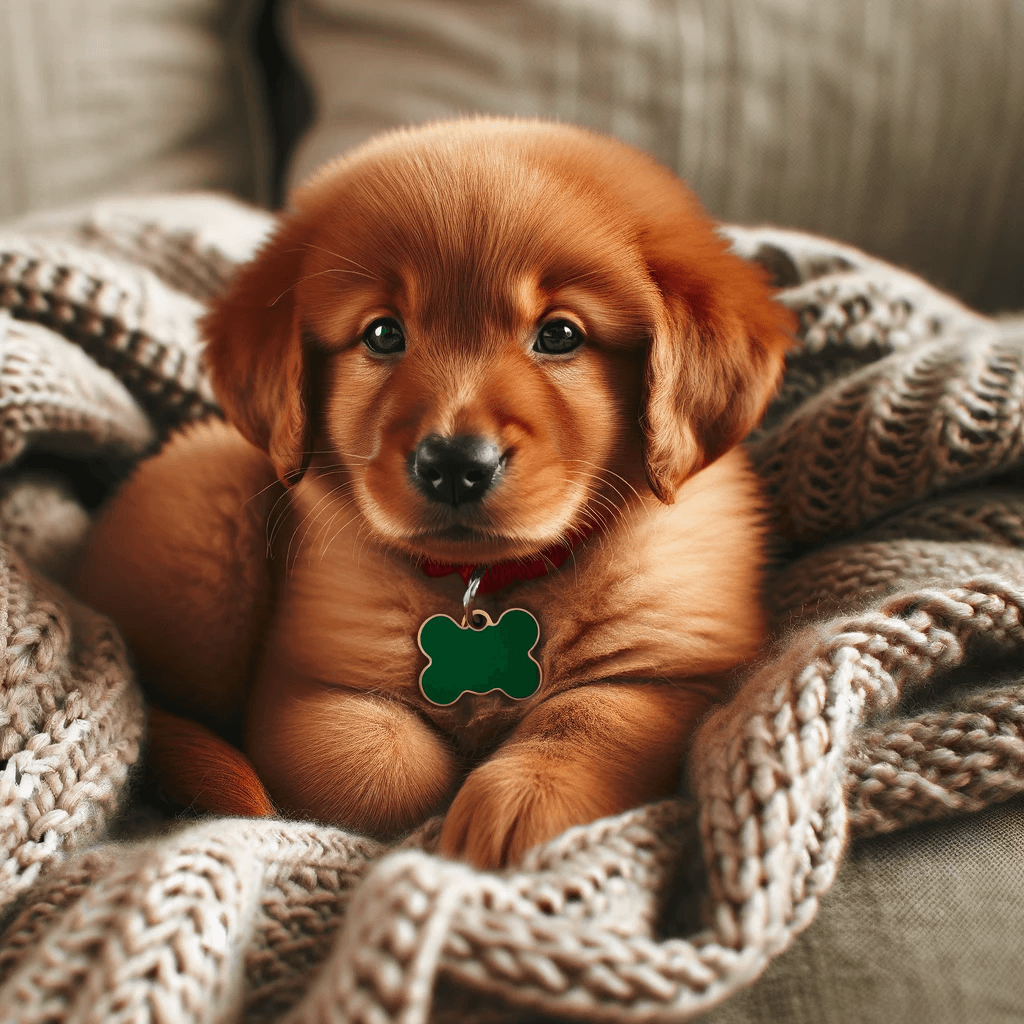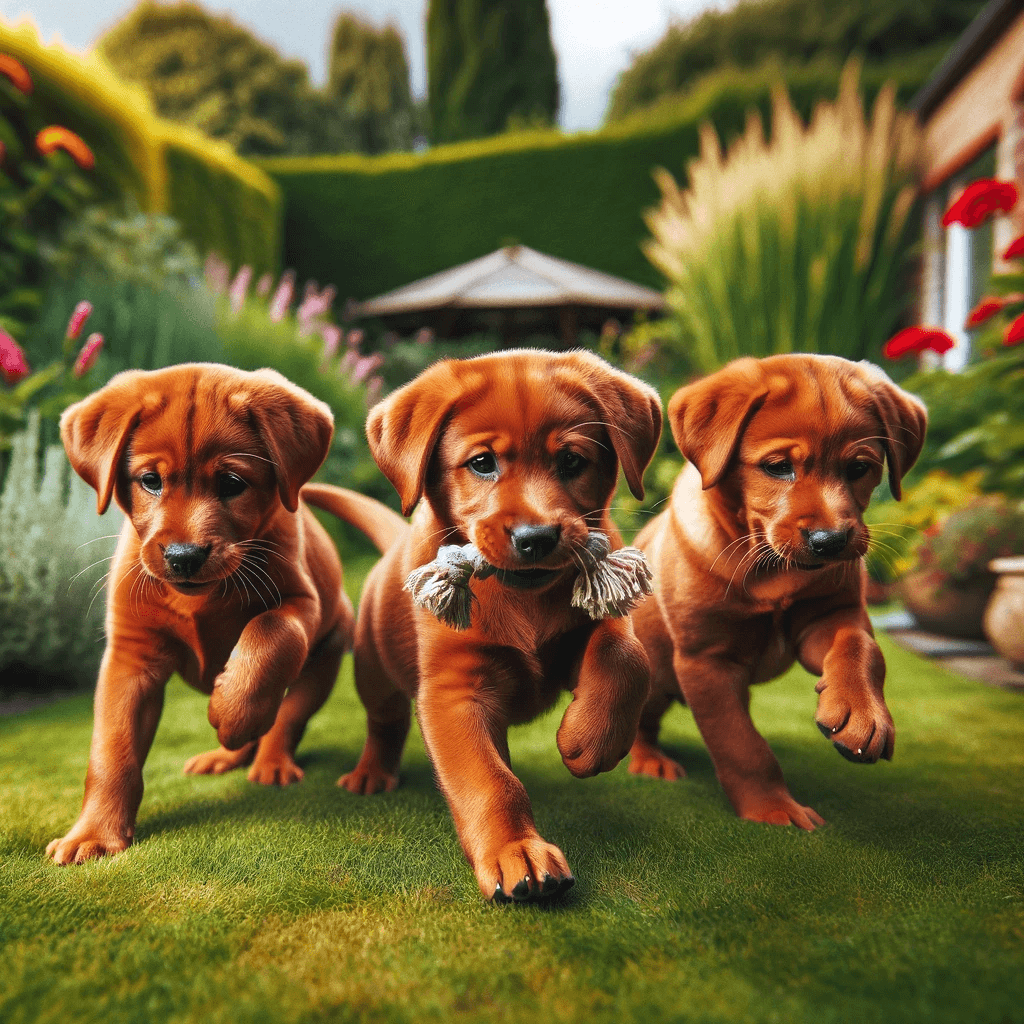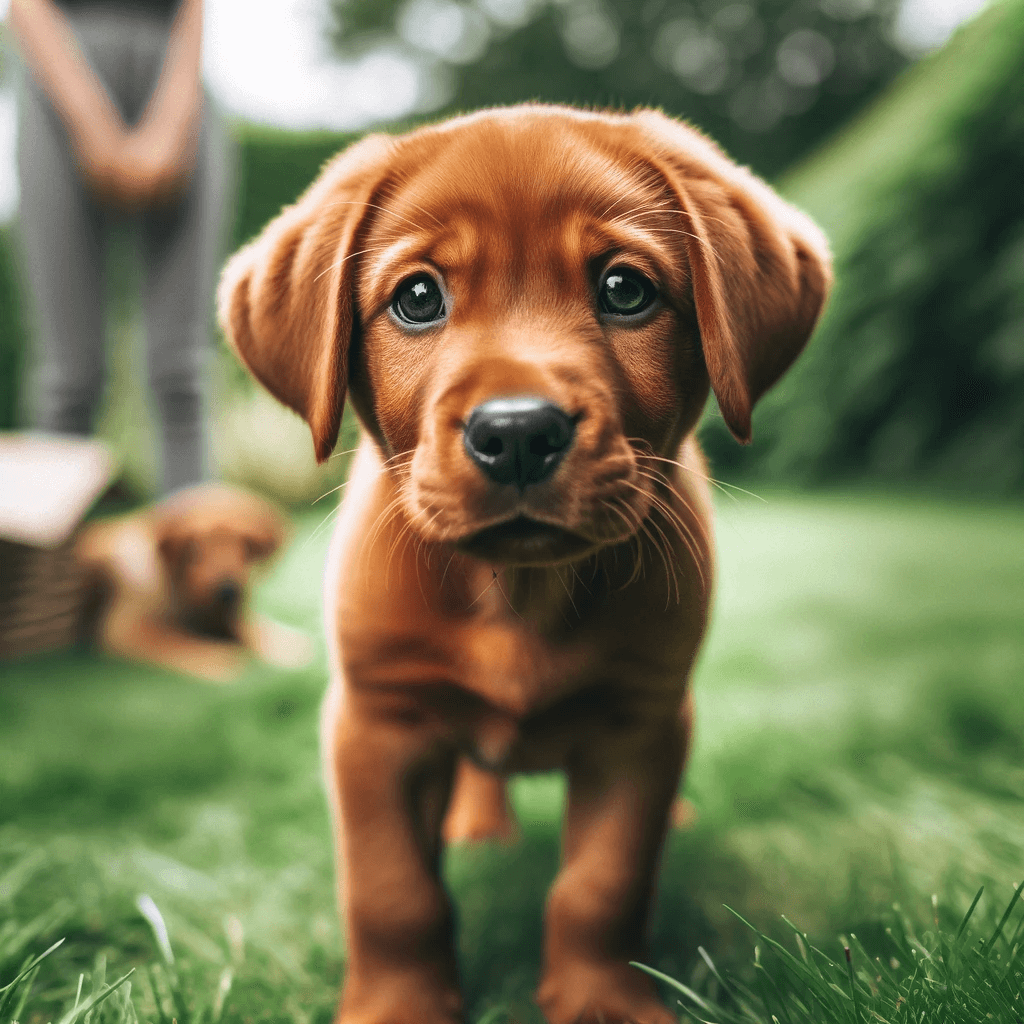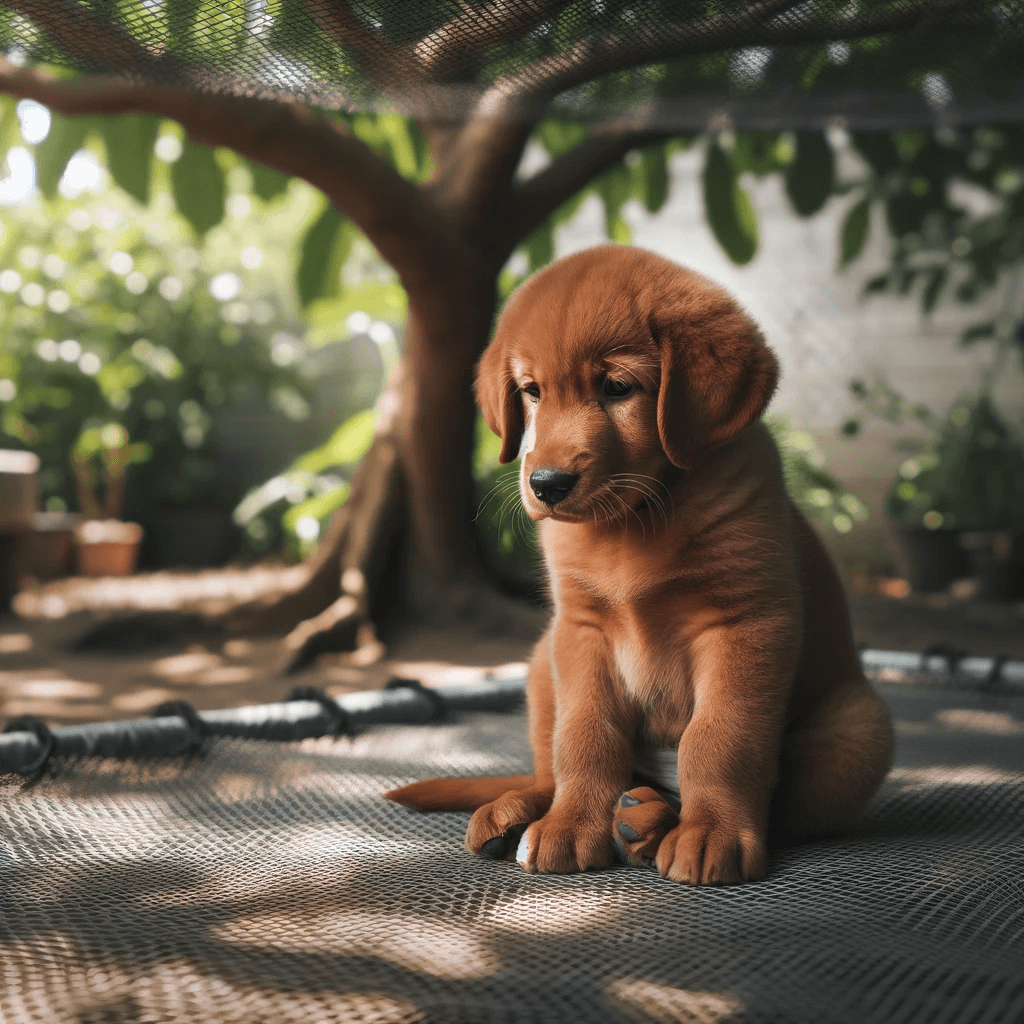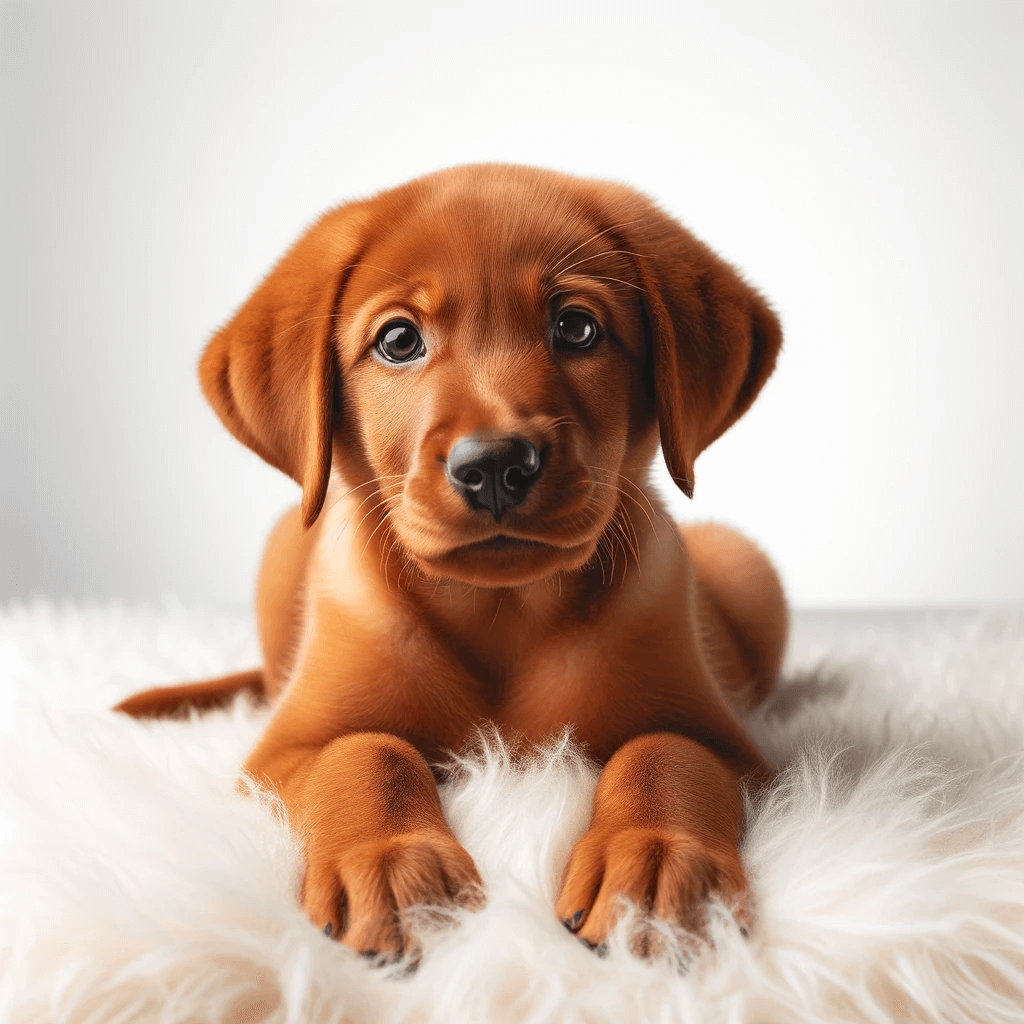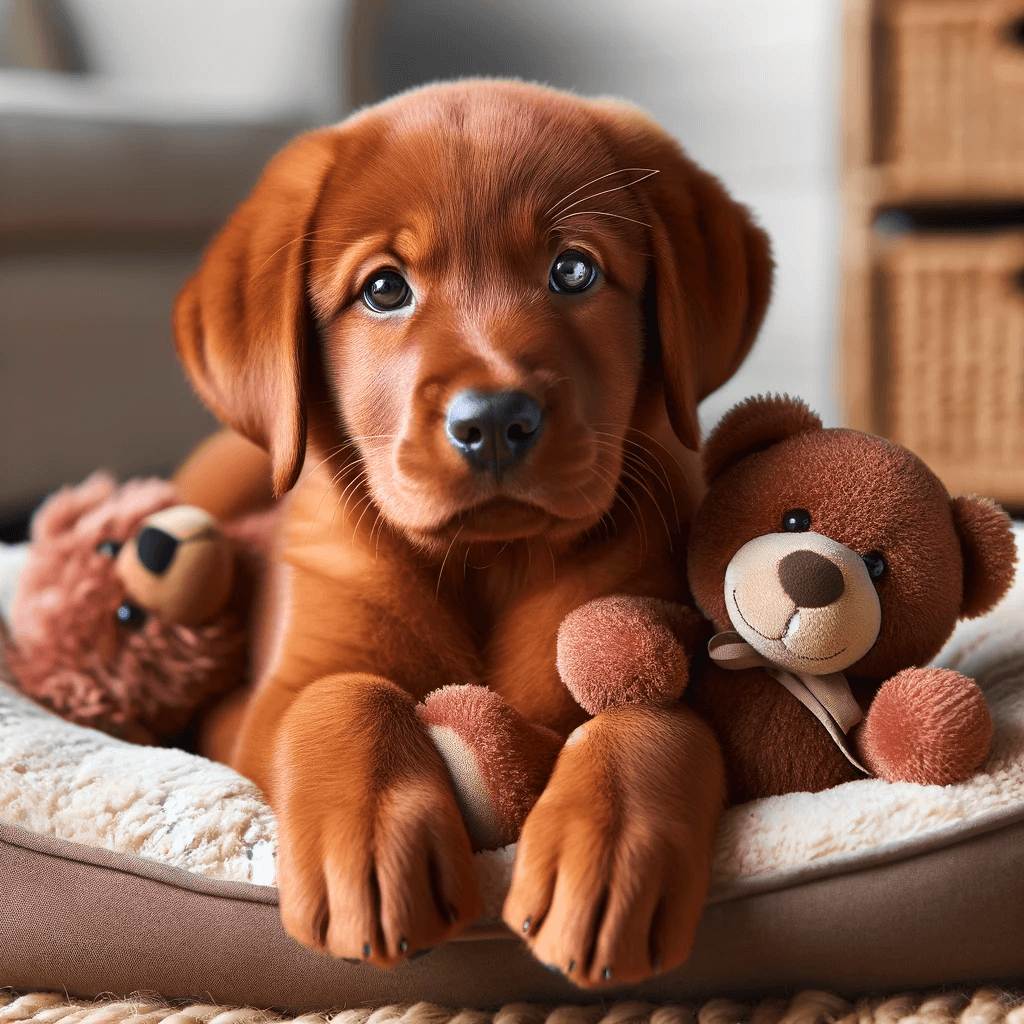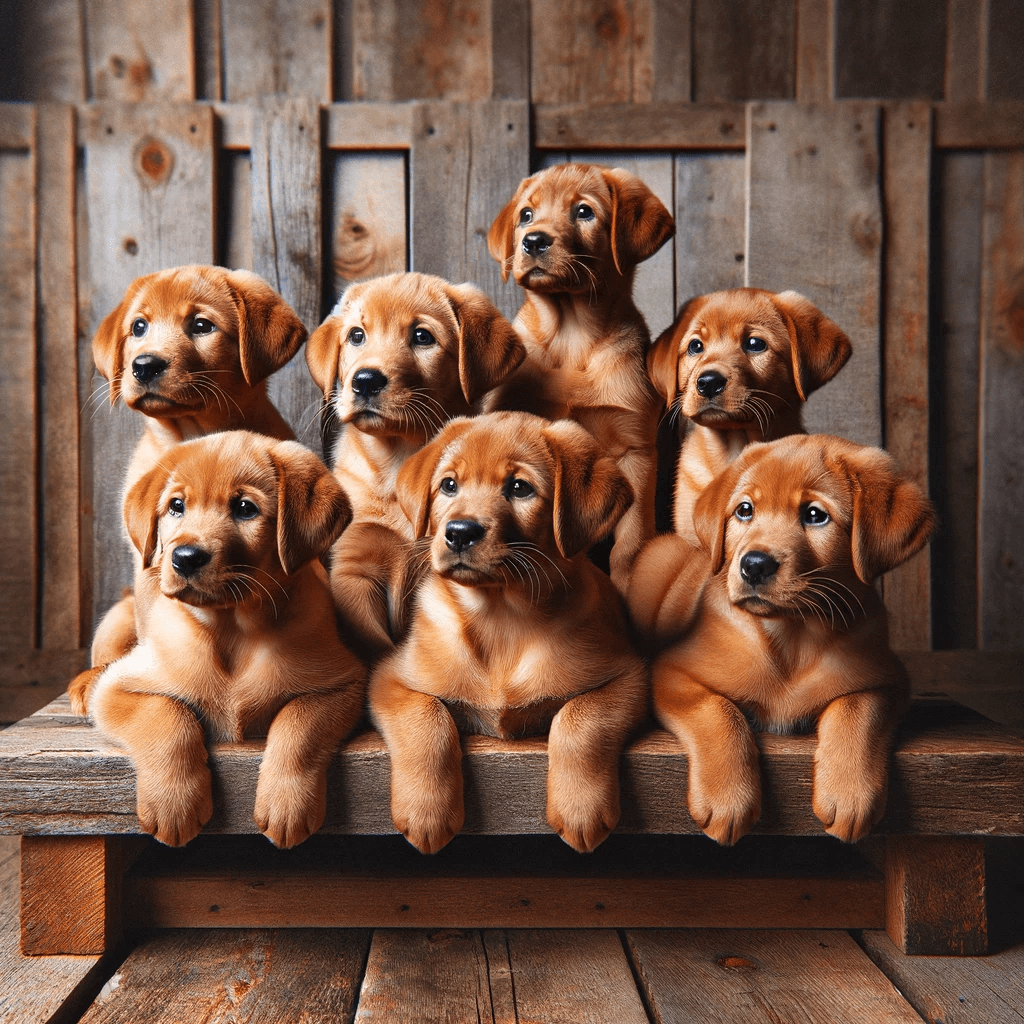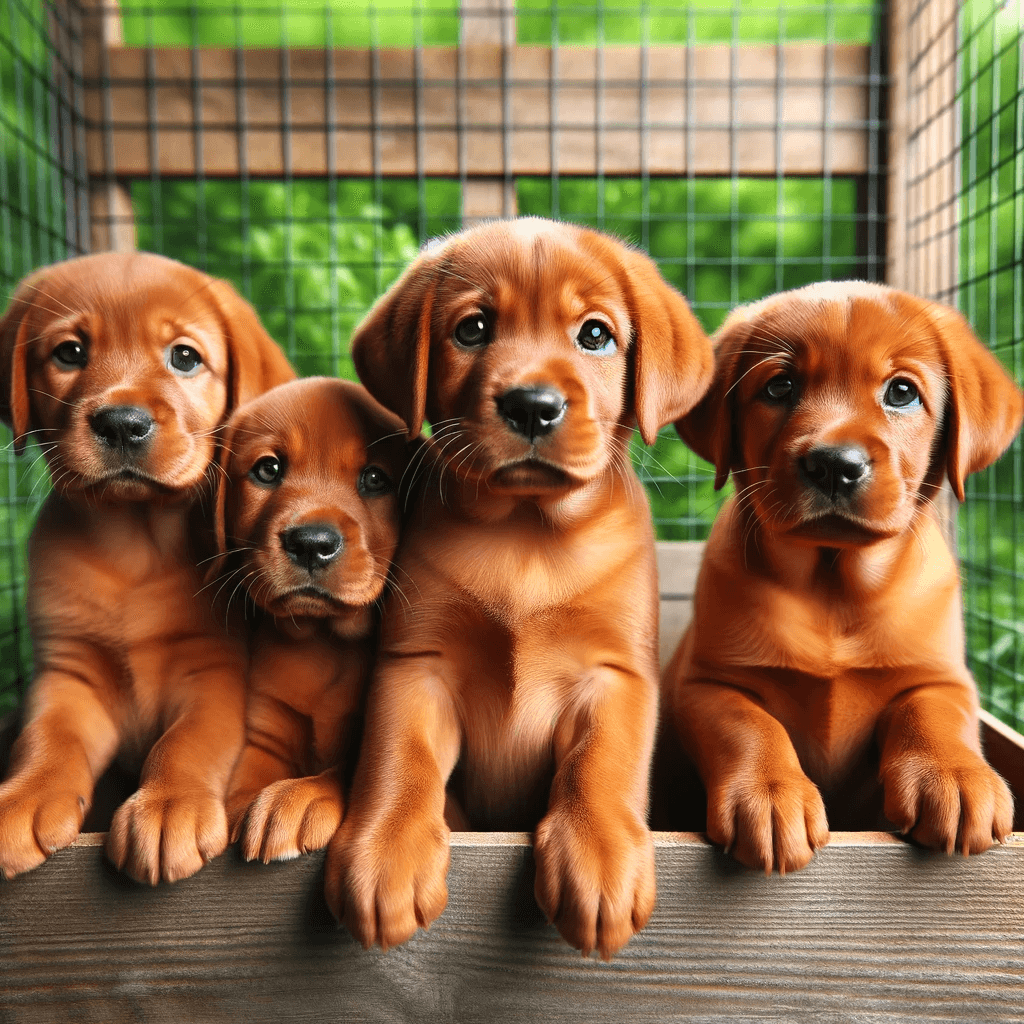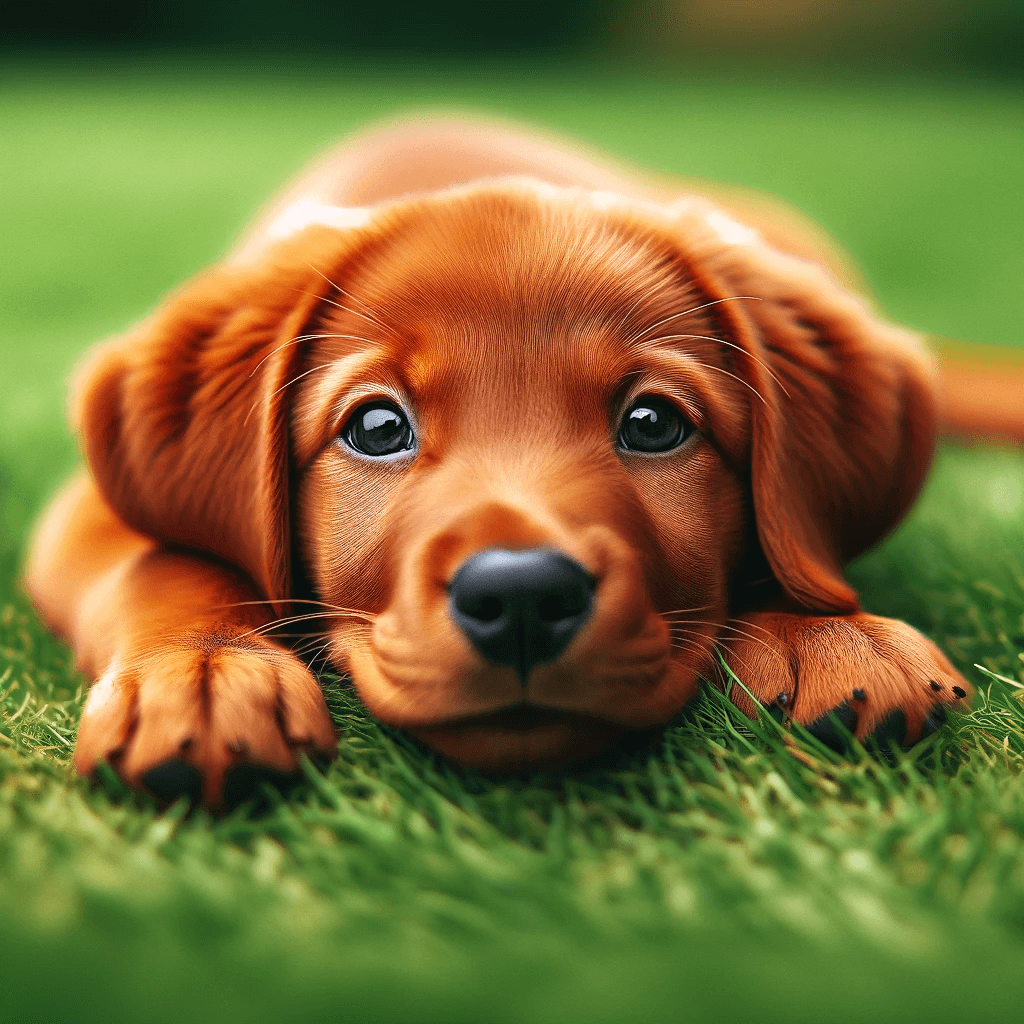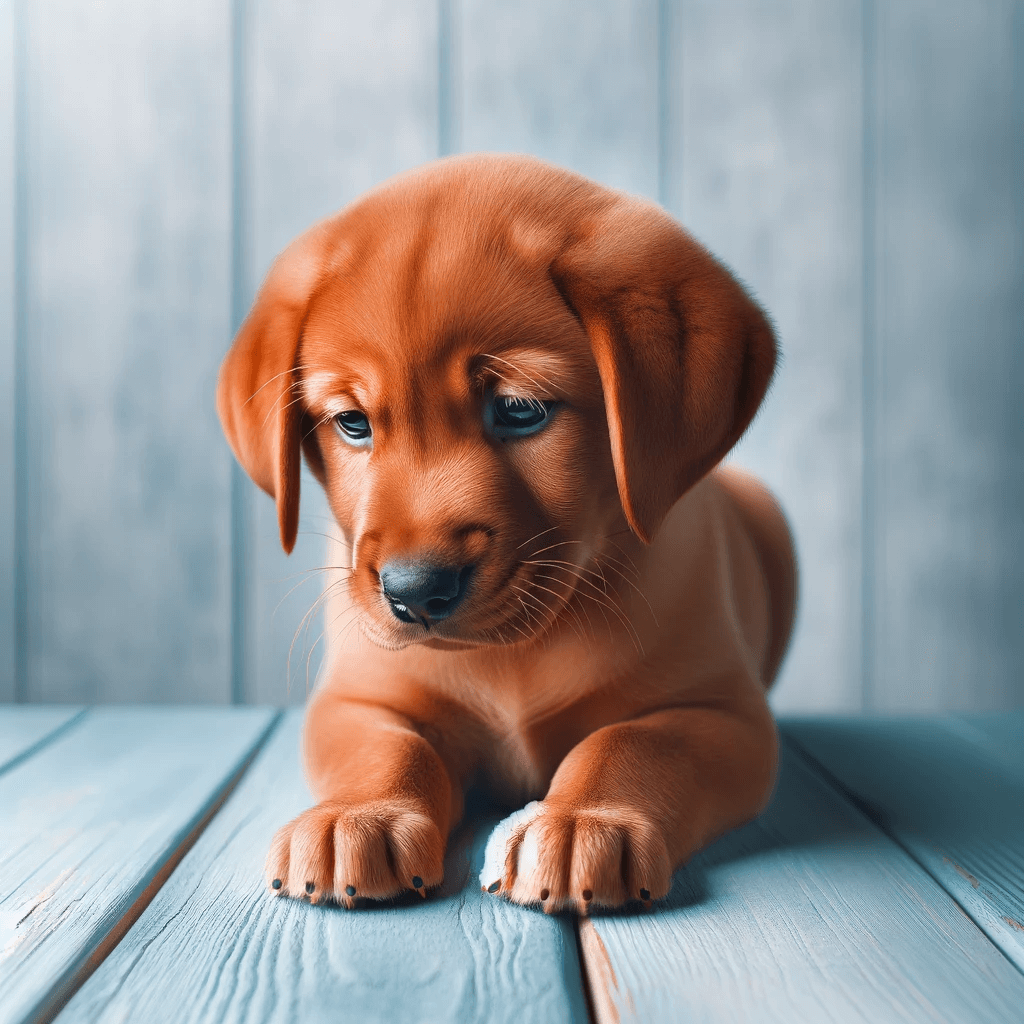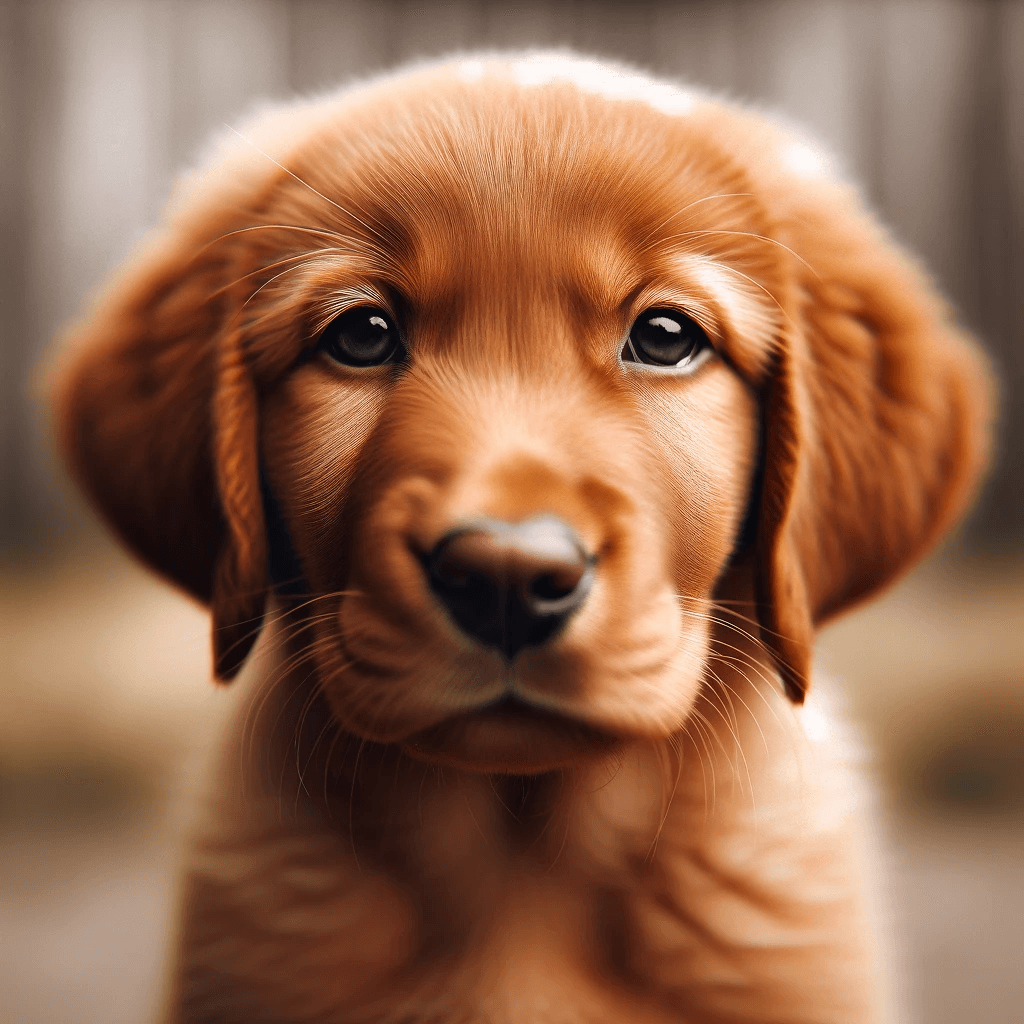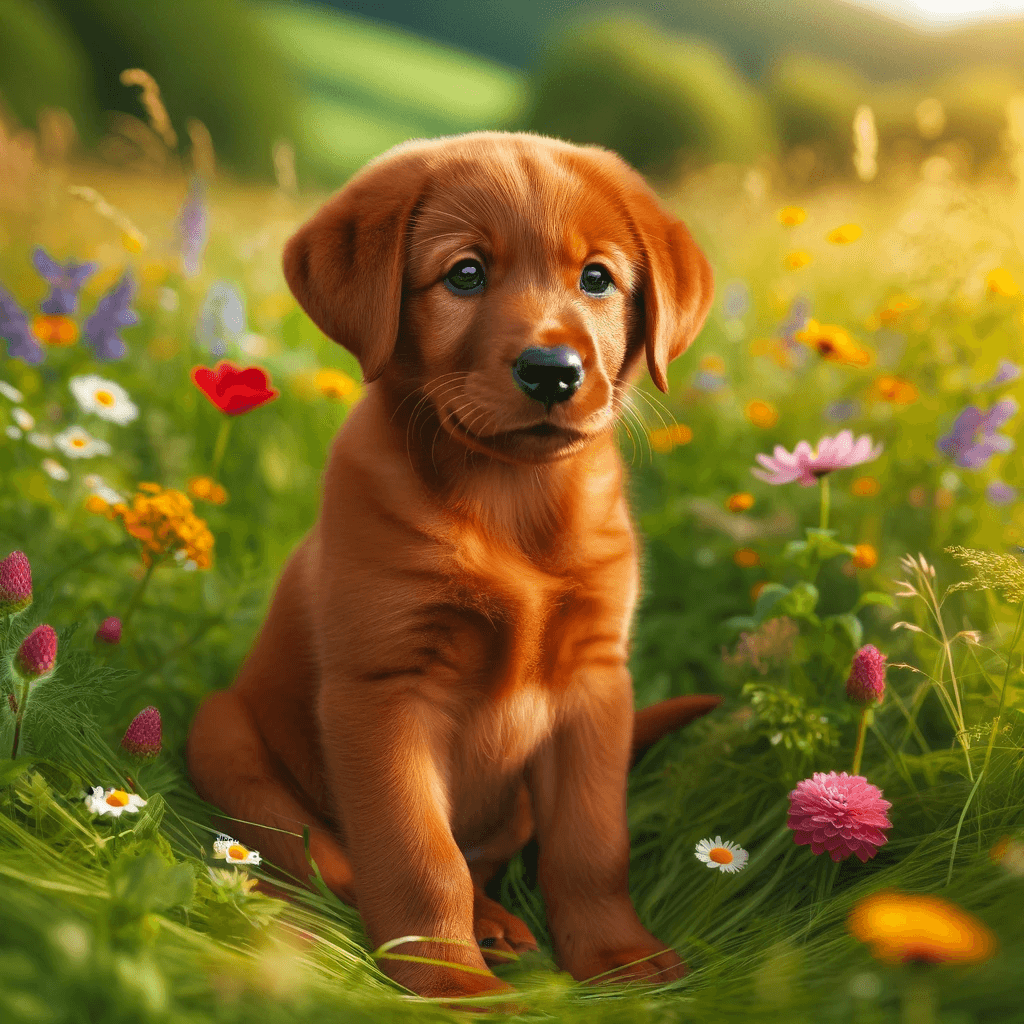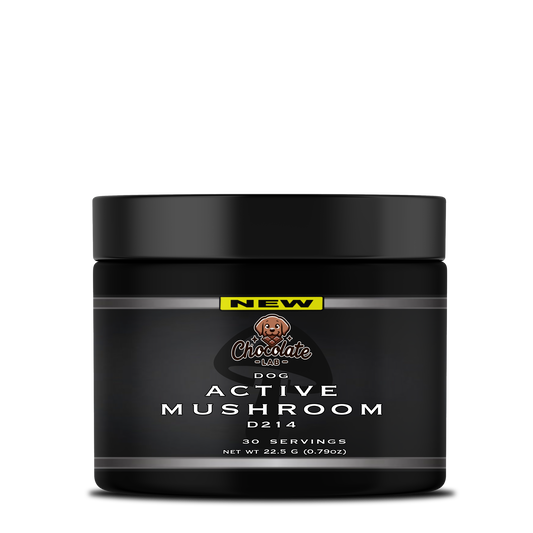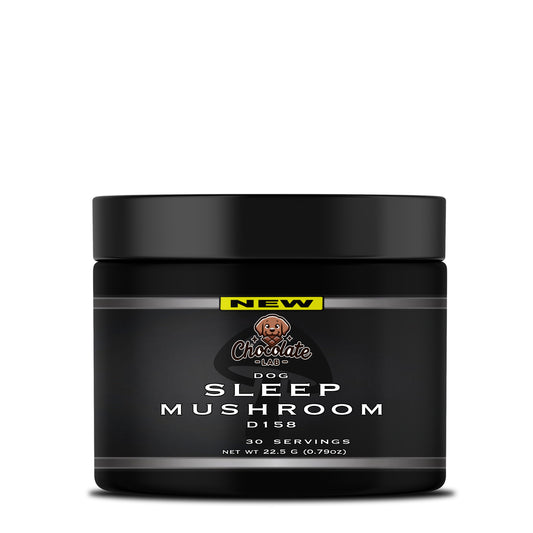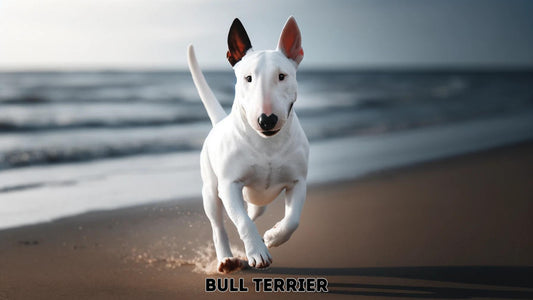Learn all about Red Fox Lab Puppies in 2024! Ideal for prospective and current owners, this all-encompassing guide covers the essentials. Discover the distinctive features, care recommendations, and delights of raising a Red Fox Lab Puppy.

Red Fox Lab Puppies: Essential Guide to Care, Traits & Training Tips
Red Fox Lab Puppies: A Comprehensive Guide to Their Charm and Care
Published on 01/17/2024, 7:53 AM EST
Last Updated on 01/17/2024, 7:53 AM EST
The Comprehensive Guide to Raising Red Fox Lab Puppies
Key Takeaways: Caring for Your Red Fox Lab Puppy

| Key Aspect | Details and Facts |
|---|---|
| Characteristics | Red Fox Labs are known for their reddish coat and energetic temperament. Ideal for families due to their friendly nature. |
| Nutrition | Essential to feed a high-quality diet specific to their growth stage. Protein-rich food for development is crucial. |
| Health Concerns | Prone to hip dysplasia and eye conditions. Preventive care through regular vet check-ups is key. |
| Vaccination | Up-to-date vaccinations and routine health check-ups are critical for puppy health. |
| Training | Begin training early with positive reinforcement and consistency. Focus on basic commands and socialization. |
| Exercise Needs | Require regular exercise to maintain their physical and mental health. Mix of walks, play, and training exercises recommended. |
| Grooming | Regular grooming including brushing and occasional baths. Maintain their distinct red coat in top condition. |
| Environment | Create a puppy-friendly environment with safe spaces, bedding, and chew toys. Puppy-proof your home for safety. |
| Behavioral Management | Address common issues like chewing and barking with appropriate toys, training, and understanding the root cause. |
| Overall Responsibility | Raising a Red Fox Lab involves love, patience, and commitment. Provide a balanced blend of nutrition, exercise, and affection. |
Table Of Contents
- Understanding and Nurturing Your Red Fox Lab Puppy
- Key Characteristics of Red Fox lab Puppies
- Red Fox Lab Puppy Growth Chart
- Health, Nutrition, and Care for Your Red Fox Lab Puppy
- Red Fox Lab Health and Prevention
- Activity Needs of Red Fox Lab Puppies
- Grooming Care for Red Fox Labs
- Training Your Red Fox Lab Puppy
- Creating a Puppy-Friendly Home for Red Fox Lab Puppies
- Behavioral Challenges in Red Fox Labs
- Conclusion: The Joy and Responsibility of Raising a Red Fox Lab Puppy
- FAQs on Red Fox Lab Puppies: Characteristics, Personality, and Care
Understanding and Nurturing Your Red Fox Lab Puppy

Red Fox Lab puppies, renowned for their vibrant red coats and dynamic personalities, are a unique variant of the classic Labrador Retriever. These puppies are not only visually striking but also inherit the affectionate and friendly traits of their Labrador lineage. In this section, we explore the essential aspects of understanding and caring for these adorable puppies, focusing on their distinctive needs and characteristics.
Key Characteristics of Red Fox Lab Puppies

- Appearance: Distinctive reddish coat color.
- Temperament: Energetic, friendly, and affectionate, making them ideal family pets.
- Socialization Needs: High, as they thrive on interaction with humans and other animals.
Red Fox Lab Puppy Growth Chart

| Age (Months) | Expected Weight Range |
|---|---|
| 2 | 10-15 lbs |
| 4 | 20-30 lbs |
| 6 | 30-45 lbs |
| 12 | 50-70 lbs |
Quick Tips for Understanding Your Puppy
- 🐾 Frequent Interaction: Engage in regular play and socialization.
- 🐾 Observation: Keep an eye on their growth and behavior for any anomalies.
- 🐾 Consult Experts: Regular vet check-ups are vital for monitoring their health.
Health, Nutrition, and Care for Your Red Fox Lab Puppy

Nourishing Your Puppy for a Healthy Life
A balanced and nutritious diet is crucial for the growth and wellbeing of Red Fox Lab puppies. Their dietary needs change as they grow, requiring a focus on high-quality food that supports their development.
Dietary Guidelines and Feeding Schedule
- Newborn to 2 Months: Mother's milk, transitioning to puppy formula.
- 2 to 6 Months: Gradual introduction of solid puppy food.
- 6 Months and Beyond: Transition to regular meals with balanced puppy food.
Feeding Schedule Table
| Age | Meals per Day | Food Type |
|---|---|---|
| 2-4 Months | 4 | Puppy Formula |
| 4-6 Months | 3 | Puppy Kibble |
| 6-12 Months | 2-3 | Balanced Diet Food |
Red Fox Lab Health and Prevention

Red Fox Lab puppies, like all breeds, are prone to certain health conditions. Awareness and proactive care are key to ensuring a healthy life.
Common Health Issues
- Hip and Elbow Dysplasia
- Eye Conditions
- Ear Infections
Quick Health Tips
- 💉 Regular Vaccinations: Stay up-to-date with their vaccination schedule.
- 🏥 Routine Check-Ups: Regular vet visits are essential for early detection of health issues.
- 🍲 Balanced Diet: Ensure their diet is rich in essential nutrients.
Activity Needs of Red Fox Lab Puppies

Red Fox Lab puppies are naturally energetic and require regular exercise to maintain their physical and mental health.
Exercise Guidelines
- Young Puppies (2-6 months): Short, frequent walks and play sessions.
- Older Puppies (6-12 months): Longer walks, interactive play, and basic training exercises.
Quick Exercise Tips
- 🚶♂️ Daily Walks: Essential for their physical health and socialization.
- 🎾 Playtime: Helps in mental stimulation and bonding.
- 🐕 Training Sessions: Enhance their obedience and behavior.
Grooming Care for Red Fox Labs

Regular grooming is important to maintain the health and appearance of their unique coat.
Grooming Essentials
- Brushing: At least twice a week to prevent matting and reduce shedding.
- Bathing: Once a month or as needed, using a gentle dog shampoo.
Quick Grooming Tips
- 🛁 Regular Bathing: Keeps their coat clean and healthy.
- 🖌️ Routine Brushing: Helps in distributing natural oils and spotting any skin issues.
Training Your Red Fox Lab Puppy

Training and providing a nurturing environment are crucial for the overall development of your Red Fox Lab puppy. These aspects not only aid in their behavioral growth but also strengthen the bond between you and your furry companion.
Effective Training Techniques
- Start Early: Begin training as soon as your puppy arrives home.
- Consistency: Use consistent commands and rewards to reinforce good behavior.
- Positive Reinforcement: Reward good behavior with treats, praise, or play.
Basic Training Commands Chart
| Command | Action Required | Tips for Training |
|---|---|---|
| Sit | Bottom down, looking up | Use a treat above the head |
| Stay | Remain in place | Gradually increase distance |
| Come | Approach the owner | Reward immediately upon arrival |
| Heel | Walk beside the owner | Keep on a short leash during walks |
Quick Training Tips
- 🐕🦺 Short Sessions: Keep training sessions short and fun.
- 🗣️ Clear Communication: Use clear and simple commands.
- 🤗 Patience: Be patient and understanding; progress takes time.
Creating a Puppy-Friendly Home for Red Fox Lab Puppies

A safe and welcoming environment is essential for a puppy's comfort and security.
Home Preparation Checklist
- Puppy-proofing: Secure cords, remove hazardous items, and ensure a safe play area.
- Bedding: Provide a comfortable and quiet sleeping area.
- Toys: Offer various toys for mental stimulation and play.
Quick Home Setup Tips
- 🏠 Safe Space: Designate a safe area where your puppy can relax and feel secure.
- 🧸 Chew Toys: Provide chew toys to satisfy their teething needs.
- 🚫 Off-limits Areas: Establish areas where the puppy is not allowed for their safety.
Behavioral Challenges in Red Fox Labs

As with any puppy, Red Fox Lab puppies may present certain behavioral challenges. Understanding and addressing these effectively is key to a harmonious relationship.
Typical Behavioral Issues
- Chewing: Natural for teething puppies but needs direction.
- Barking: Can be due to excitement, attention-seeking, or anxiety.
- Jumping: A sign of excitement or seeking attention.
Behavioral Management Strategies
| Behavior | Management Strategy | Tips |
|---|---|---|
| Chewing | Provide appropriate toys | Redirect to a chew toy |
| Barking | Understand the cause | Train quiet commands |
| Jumping | Ignore until calm | Reward calm behavior |
Quick Behavior Management Tips
- 🐾 Consistent Rules: Establish and maintain consistent household rules.
- 🤝 Socialization: Expose them to different environments and people.
- 🧘 Calm Responses: React calmly to undesired behaviors to avoid reinforcement.
Conclusion: The Joy and Responsibility of Raising a Red Fox Lab Puppy

Raising a Red Fox Lab puppy is an adventure filled with love, learning, and laughter. These puppies bring a unique blend of energy, affection, and beauty into your life. By providing proper care, nutrition, training, and a nurturing environment, you're setting the stage for a lifetime of happiness and companionship with your Red Fox Lab. Share your experiences and tips with fellow dog lovers, and embrace the wonderful journey of being a Red Fox Lab puppy parent.
FAQs on Red Fox Lab Puppies: Characteristics, Personality, and Care

| FAQ | Answer |
|---|---|
| Are Red Fox Lab Puppies a Rare Breed? | Red Fox Lab puppies are somewhat rare compared to other Labrador colors. They are a unique variation of the Labrador Retriever, known for their distinct reddish coat. |
| What Are the Personality Traits of Red Fox Lab Puppies? | The personality of Red Fox Lab puppies typically includes being friendly, energetic, and loyal. They are known for their playful nature and strong bonding with families. |
| What Breeds Make Up a Red Fox Lab Puppy? | A Red Fox Lab is typically a purebred Labrador Retriever with a reddish coat color, rather than a mix of different breeds. |
| Do Red Fox Lab Puppies Shed Excessively? | Like most Labradors, Red Fox Lab puppies do shed, especially during seasonal changes. Regular grooming can help manage their shedding. |
| Which Labrador Color Is Considered the Rarest? | The Silver Labrador is often considered the rarest Labrador color, with Red Fox Labs also being relatively rare. |
| Are Red Fox Lab Puppies Known for Being Calm? | Red Fox Lab puppies are energetic and playful, but with proper training and exercise, they can be quite calm and well-behaved. |
| Is a Fox Red Lab the Same as a Yellow Lab? | Fox Red Labs are a darker shade of the Yellow Labrador, making them part of the same color spectrum but with a distinct reddish hue. |
| What Are the Best Labrador Mixes for Families? | Popular Labrador mixes for families include the Labradoodle (Labrador and Poodle) and the Goldador (Labrador and Golden Retriever), known for their friendly and loyal nature. |
| What's the Ideal Weight Range for a Fox Red Labrador? | The ideal weight for a Fox Red Labrador ranges from 55 to 80 pounds, depending on their gender, age, and overall health. |
| Which Labrador Breed Is the Calmest by Nature? | Among Labrador breeds, the English Labrador is often considered the calmest, known for its gentle temperament and easy-going nature. |
| What Lab Mix Breeds Are Known for Minimal Shedding? | Lab mixes that are known for minimal shedding include the Labradoodle (Labrador and Poodle) and the Lab Pointer (Labrador and Pointer). |
| At What Age Do Labrador Puppies Typically Become Calmer? | Labrador puppies generally start to become calmer around the age of 2 to 3 years, as they mature out of their puppy phase. |



